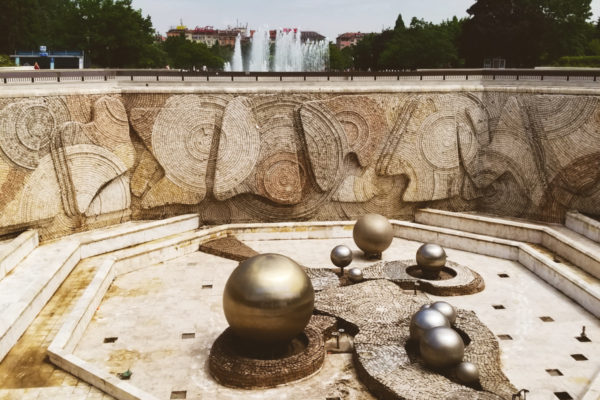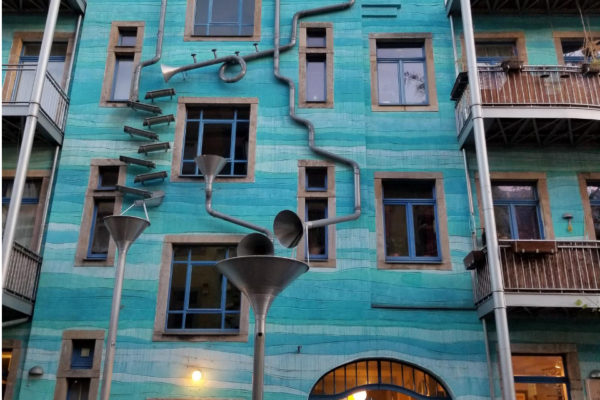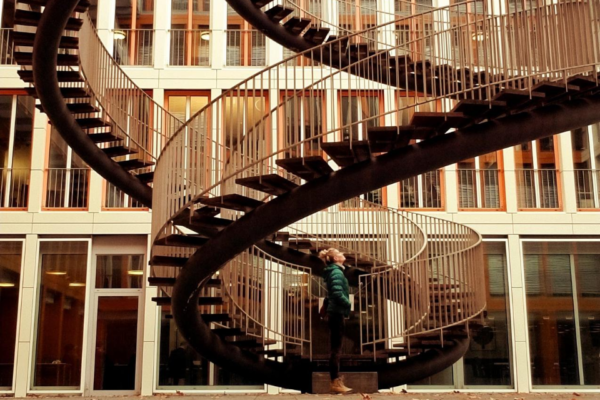Adolf Hitler was appointed Chancellor of Germany in 1933 and Georg Elser hated him right from the start. Elser believed something terrible was going to happen at the hands of the Nazis and the only way to stop it would be to remove their leadership. Killing Hitler became Elser’s obsession.
Georg Elser was born in Germany in 1903 and became a carpenter. He was known to be very intelligent and capable but had a troubled family and an employment history marked by poor conditions and numerous layoffs. Elser wanted to improve conditions for German workers and, most of all, he wanted to prevent a war that he believed Hitler would bring.
Elser decided to kill Hitler and he thought the best way to do this would be at some sort of rally. Every year, on November 8, Hitler gave a speech at the Bürgerbräukeller in Munich to commemorate his (failed) coup d’état in 1923, known as the Beer Hall Putsch.
On November 8, 1938, Elser travelled to Munich to see Hitler’s annual speech. Due to crowding, he wasn’t able to get inside the venue for the speech but snuck in later that night after everyone had left. Looking around the space, Elser got an idea. Knowing that Hitler gave a speech at the Bürgerbräukeller on November 8 of every year, Elser decided to plant a bomb to kill Hitler at his speech the next year.
Elser went back to his hometown and got a job in an armament factory, where he started systematically stealing explosives. Over the next few months months he amassed 105 blasting cartridges and 125 detonators. By July 1939, he was testing his homemade bombs – made from clock parts and vehicle turn signals – in a secluded orchard owned by his parents.
In August of 1939, Elser moved to Munich and lived off his savings while he worked day and night on his “infernal machine”. Every evening, he had a late dinner at Bürgerbräukeller’s restaurant. After dinner, he’d hide in the adjoining beer hall until everyone had left the building, around 11 p.m.
That’s when Elser got to work. He began hollowing out a pillar that stood behind the speaker’s podium. He installed a secret door in the pillar, so no one would notice that it was slowly being hollowed out. Elser worked until 3 or 4 a.m. and then snoozed in the storeroom until 6:30 a.m., when the first staff began to arrive for the day. He would then sneak out the back door with the debris from the hollowed pillar hidden in his briefcase. During the day, he worked on the bomb, telling anyone who asked about his strange collection of tools and drawings that he was an inventor.
On November 5, 1939, Elser installed the bomb in the pillar and set it to detonate at 9:20 p.m. on November 8 – exactly when Hitler would be standing in front of the pillar, giving his speech. After one last check to make sure the bomb was set up correctly, Elser celebrated with two cups of coffee from the corner kiosk and headed for Switzerland.
The bomb went off exactly when it was supposed to. Eight high-ranking Nazis were killed and 63 people were injured. But Hitler was not one of them. Due to fog, Hitler’s post-speech flight back to Berlin was cancelled, so his speech was moved up half an hour earlier so he could travel by train instead. The bomb detonated 13 minutes after Hitler had left the Bürgerbräukeller.
While on his private train to Berlin, Hitler’s right-hand man, Joseph Goebbels, informed him of what had happened. Hitler was delighted at his luck. He proclaimed that leaving the Bürgerbräukeller earlier than usual was “proof that Providence wants me to reach my goal.” I can’t even type that without grinding my teeth.
Elser was arrested 25 metres from the Swiss border and taken to the Gestapo headquarters in Munich, where he was repeatedly interrogated and tortured for a year. It’s incredibly hard to read about what was done to him during that time, so I won’t write about it. Elser was transferred to Sachsenhausen concentration camp in 1941, where he was kept in “special custody” until being transferred to Dachau in early 1945.
By April, 1945, Hitler knew he’d lost the war. Nazi surrender was imminent. In a final act of desperation, Hitler ordered the murders of several political prisoners. One of these was Elser, who was shot and immediately thrown, fully clothed, into the crematorium. Less than 4 weeks before the liberation of Dachau.
The picture below is of a monument to Georg Elser. It stands at the intersection of Wilhelmstrasse and An der Kolonnade in Berlin and depicts the profile of Elser’s face against a background of sky. At nighttime, it is illuminated.
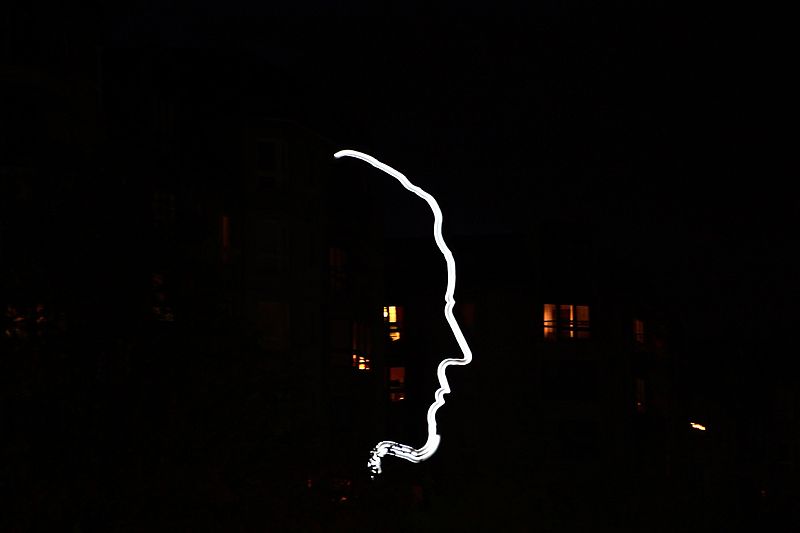
This monument is the work of German artist, Ulrich Klages, who called it “Denkzeichen Georg Elser”. The word “denkzeichen” means “symbol of thought” and the artist chose that name because he wanted to create a monument that inspired thought and discussion rather than admiration.
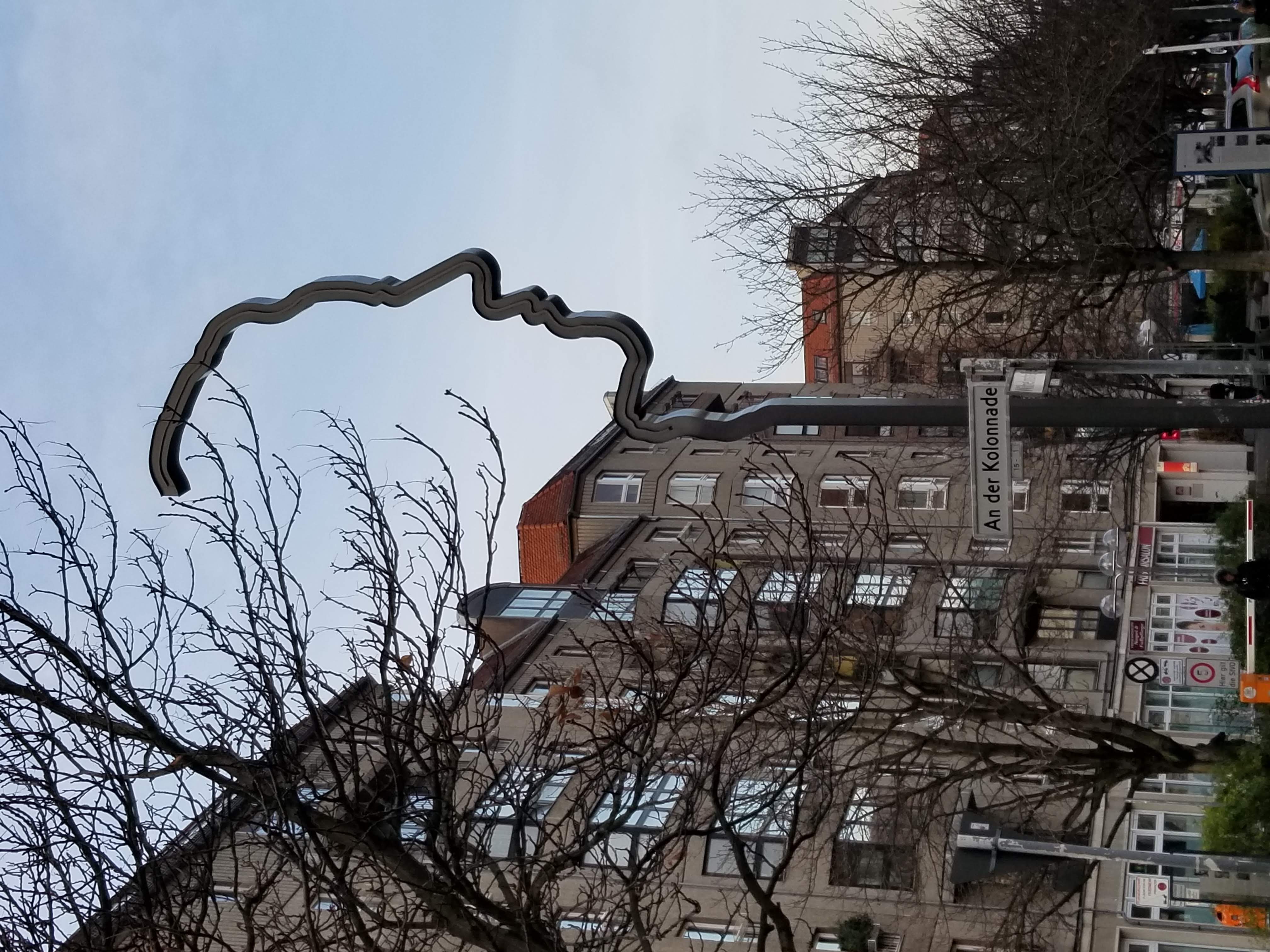
When I went looking for this monument, I couldn’t find it. I had walked to the intersection that was shown on my map but I looked all around and couldn’t see it. Until I happened to tip my head back and look up to the sky and realized I was standing right underneath it. I had been looking for something about street-sign height, but this monument is 17 metres (56 feet) tall. I walked half a block away, to get a better view, and turned to look back at it.
As I stood on the sidewalk and watched clouds passing behind this outline of Elser’s face, it did make me think. I thought about what might have been different if Elser had succeeded. What if it hadn’t been foggy that night. What if Elser had made it to Switzerland. What if, what if, what if. When we look into the past, we can never say for sure how things would have turned out if we had made different choices. All we can do is know about what did happen and choose our future actions wisely.

